USB Type C cables come in various lengths, but what is the longest USB Type C cable you can find? USB Type C is a versatile connector that supports multiple protocols and connections, such as HDMI, DisplayPort, Thunderbolt, and USB 3.1. The length of USB Type C cables can vary depending on the generation and the specific device.
Key Takeaways:
- The longest USB Type C cable available on the market is currently up to 3 meters in length.
- USB Type C cables support different protocols and connections, including HDMI, DisplayPort, Thunderbolt, and USB 3.1.
- The maximum practical length of USB cables depends on the USB generation. USB 3.2 Gen 1 cables can reach a maximum length of 2-3 meters, while USB 3.2 Gen 2 and USB 3.2 Gen 2×2 cables are limited to one meter.
- USB 4 cables have a maximum length of 0.8 meters.
- To extend the length of USB cables beyond their maximum limits, USB extenders, active extension cables, and USB hubs can be used.
Understanding USB Type C and Its Capabilities
USB Type C, also known as USB-C, is a versatile connector that has become the standard for many devices, offering faster data transfer speeds and power delivery. It has a reversible design, meaning that you can plug it in either way, making it easy to use. USB-C cables can carry different protocols and connections, such as USB 3.1, HDMI, DisplayPort, and even Thunderbolt.
With USB-C, you can transfer data at speeds of up to 10 Gbps, which is twice as fast as the previous USB 3.0 standard. This means that you can quickly transfer large files between devices, making it ideal for professionals who work with high-resolution videos or photos. USB-C also supports power delivery, allowing you to charge your devices faster and even power external displays or peripherals.
One of the advantages of USB-C is its compatibility with different devices. Many smartphones, tablets, laptops, and even gaming consoles now come with USB-C ports, making it easy to connect and charge multiple devices with a single cable. However, it’s important to note that not all USB-C cables support the same features or have the same maximum length.
To determine the maximum length of a USB-C cable, you need to consider the USB generation it supports. USB 3.2 Gen 1 cables, which are commonly found, can have a maximum practical length of 2-3 meters. USB 3.2 Gen 2 and USB 3.2 Gen 2×2 cables, on the other hand, have a maximum length of about one meter. USB 4 cables, the latest standard, are limited to a maximum length of 0.8 meters.
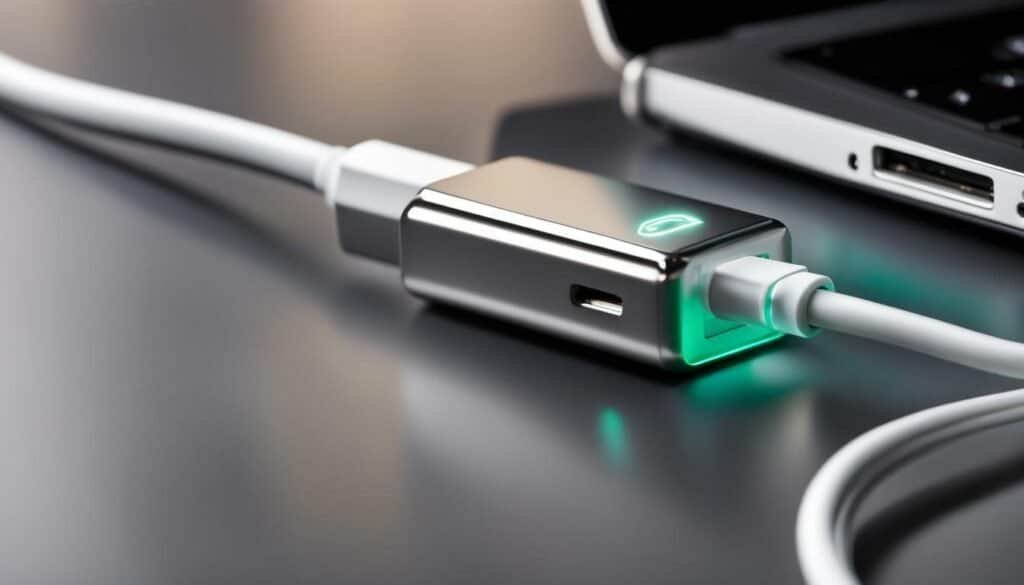
In summary, USB Type C, or USB-C, is a versatile connector that offers faster data transfer speeds and power delivery. It is compatible with various devices and supports different protocols and connections. The maximum length of USB-C cables depends on the USB generation they support, with USB 3.2 Gen 1 cables having the longest practical length of 2-3 meters. USB extenders, active extension cables, and USB hubs can be used to extend the length of USB cables beyond their maximum limits, providing flexibility in connectivity options.
| USB Generation | Maximum Practical Length |
|---|---|
| USB 3.2 Gen 1 | 2-3 meters |
| USB 3.2 Gen 2 and Gen 2×2 | 1 meter |
| USB 4 | 0.8 meters |
The Different USB Generations and Their Maximum Lengths
The maximum length of a USB Type C cable depends on the USB generation it supports, with each generation having its own limitations. USB Type C is a versatile connector that supports various protocols and connections, including HDMI, DisplayPort, Thunderbolt, and USB 3.1. When it comes to USB cables, they are available in different lengths to cater to different needs.
For USB 3.2 Gen 1 cables, the maximum practical length is typically around 2 to 3 meters. These cables offer data transfer speeds of up to 5 Gbps and are commonly used for connecting peripherals such as keyboards, mice, and external hard drives. If you require longer cable lengths, it is advisable to use USB extenders or active extension cables.
USB 3.2 Gen 2 and USB 3.2 Gen 2×2 cables have a maximum length limitation of 1 meter. These cables offer faster data transfer speeds of up to 10 Gbps (Gen 2) and 20 Gbps (Gen 2×2). They are often used for connecting high-speed storage devices or external monitors. If you need to extend the length of these cables, active Thunderbolt 3 cables can be utilized.
USB 4 cables, which are the latest generation, have a maximum length limitation of 0.8 meters. These cables support data transfer speeds of up to 40 Gbps and provide enhanced power delivery capabilities. They are commonly used for high-performance applications such as connecting gaming peripherals, video editing equipment, or high-resolution displays.
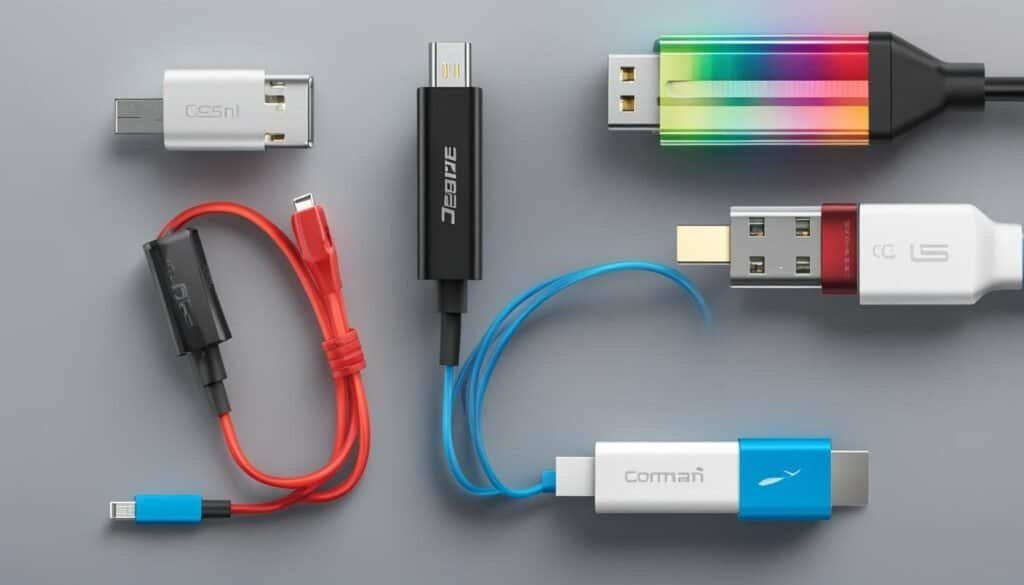
In summary, the maximum length of a USB Type C cable varies depending on the USB generation it supports. USB 3.2 Gen 1 cables have a maximum practical length of 2 to 3 meters, while USB 3.2 Gen 2 and Gen 2×2 cables are limited to 1 meter. USB 4 cables have a maximum length limitation of 0.8 meters. To extend the length beyond these limits, USB extenders, active extension cables, and USB hubs can be used. It’s important to consider the specific requirements of your devices and the functionalities you need when selecting a USB Type C cable.
Exploring the Maximum Length of USB Type C Cables
The length of USB Type C cables varies depending on the USB generation, with each generation having recommended maximum lengths. USB Type C cables are commonly used for data transfer, power delivery, and connecting peripheral devices. To understand the maximum length of USB Type C cables, let’s take a closer look at the different USB generations and their respective cable lengths.
USB 3.2 Gen 1: These cables, also known as USB 3.0, offer faster data transfer speeds and a maximum practical length of 2-3 meters. They are commonly used for connecting external hard drives, flash drives, and other USB devices.
USB 3.2 Gen 2 and USB 3.2 Gen 2×2: These cables are capable of even faster data transfer speeds, but they have a shorter maximum practical length of 1 meter. They are often used for connecting high-speed storage devices and external displays.
USB 4: USB 4 cables have a maximum length of 0.8 meters. While USB 4 offers various improvements and supports multiple protocols like Thunderbolt, the shorter cable length is a limitation to consider when using USB 4 devices.
It is important to note that these are the recommended maximum lengths for each USB generation. While it is possible to find longer USB Type C cables on the market, using cables longer than the recommended maximum length may result in signal degradation, slower data transfer speeds, or power delivery limitations.
| USB Generation | Recommended Maximum Length |
|---|---|
| USB 3.2 Gen 1 (USB 3.0) | 2-3 meters |
| USB 3.2 Gen 2, USB 3.2 Gen 2×2 | 1 meter |
| USB 4 | 0.8 meters |
To extend the length of USB Type C cables beyond their maximum limits, there are options available such as USB extenders, active extension cables, and USB hubs. These devices can help overcome the limitations of cable length by acting as intermediaries, amplifying signals, or providing additional ports for connecting multiple devices.
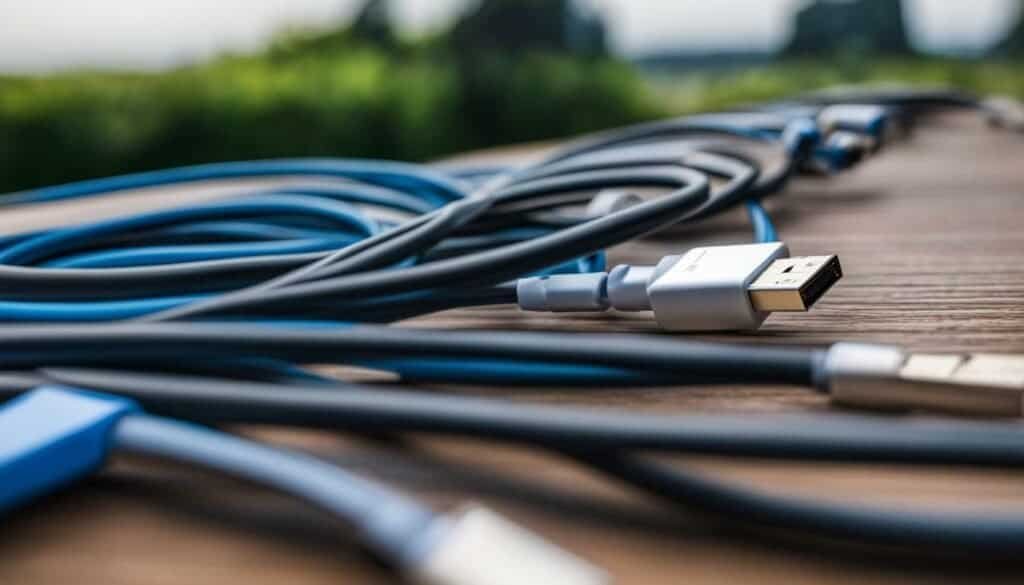
Extending USB Cable Length with USB Extenders and Active Cables
If you need to extend the length of your USB Type C cable beyond the maximum limit, there are options available such as USB extenders and active cables. These solutions can help you connect devices that are located further apart or in areas where the standard cable length falls short.
An active cable is a type of USB extension cable that includes built-in electronics to boost the signal and maintain data integrity over longer distances. It actively amplifies the electrical signals, allowing for reliable and high-speed data transfer. Active cables are available in various lengths and can significantly extend the reach of your USB Type C connection.
USB extenders are another practical solution for extending USB cable length. These devices act as signal repeaters, amplifying the USB signal and allowing for longer cable runs. USB extenders are available in different configurations such as USB over Cat6 extenders, which utilize Ethernet cables for extending the USB connection. They are particularly useful in scenarios where long cable runs are necessary, such as in large office spaces or event venues.
| Pros of USB Extenders and Active Cables: | Cons of USB Extenders and Active Cables: |
|---|---|
|
|
When using USB extenders or active cables, it is important to consider the maximum length supported by the specific device or protocol you are using. Some devices may have their own limitations, and exceeding those limits could result in signal degradation or data loss. Always refer to the manufacturer’s specifications and guidelines to ensure optimal performance.
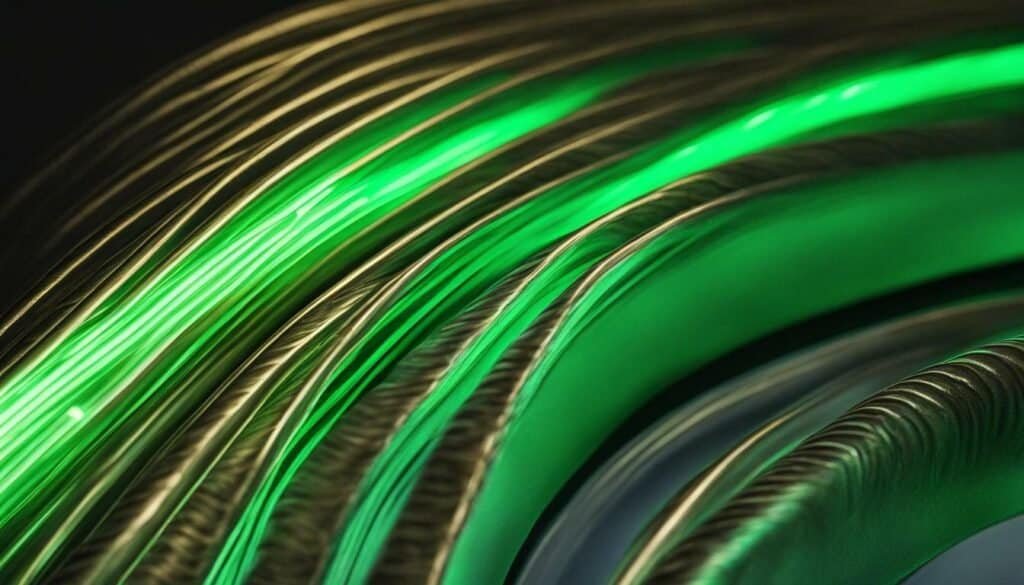
Summary
In summary, if you find yourself in need of extending the length of a USB Type C cable, USB extenders and active cables are viable solutions to consider. These devices allow for longer cable runs while maintaining reliable data transfer. However, it is important to be aware of the limitations of both the cable and the device being connected. Choose the appropriate solution based on your specific requirements and always refer to the manufacturer’s guidelines for maximum cable length and compatibility.
USB Hubs and Their Role in Extending Cable Length
USB hubs can play a crucial role in extending the cable length of USB Type C cables, allowing you to connect multiple devices and extend their reach. By using a USB hub, you can overcome the limitations of the maximum cable length and conveniently connect various peripherals to your USB Type C-enabled devices.
A USB hub acts as a central hub that expands the number of available USB ports. It allows you to connect multiple devices, such as external hard drives, keyboards, mice, printers, and more, to your computer or laptop using a single USB Type C cable. This eliminates the need for multiple cables and helps declutter your workspace.
USB hubs come in different variations, including USB-C hubs and USB-A hubs. USB-C hubs are designed specifically for USB Type C ports and offer a range of connectivity options, such as HDMI, DisplayPort, Ethernet, and additional USB ports. USB-A hubs, on the other hand, are compatible with USB Type A ports and can be used with USB Type C devices using an adapter.
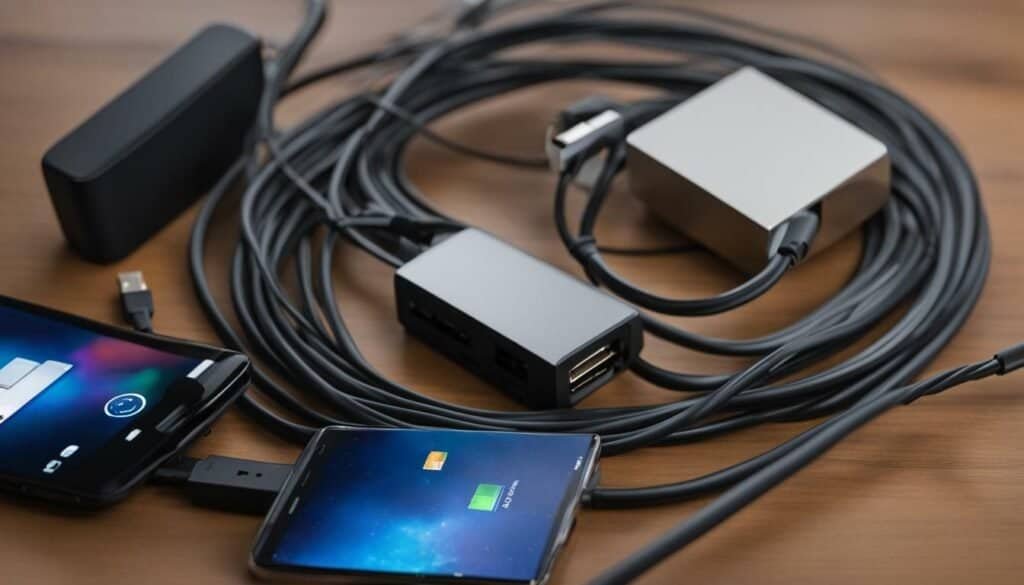
Benefits of Using USB Hubs
There are several benefits to using USB hubs:
- Expandability: USB hubs allow you to connect multiple devices to your computer or laptop, expanding its capabilities and making it more versatile.
- Convenience: With a USB hub, you can eliminate the hassle of constantly plugging and unplugging devices. Simply connect all your peripherals to the hub and connect the hub to your device with a single USB cable.
- Flexibility: USB hubs provide flexibility in terms of cable length. You can position the hub closer to your devices, allowing for more convenient access.
- Organization: Using a USB hub helps keep your workspace tidy and organized by reducing cable clutter.
Overall, USB hubs are a practical solution for extending the cable length of USB Type C cables and creating a more efficient and organized workstation. Whether you need to connect multiple devices or require greater flexibility with cable length, a USB hub can meet your needs.
| HUB Type | Compatibility | Connectivity Options |
|---|---|---|
| USB-C Hub | USB Type C ports | HDMI, DisplayPort, Ethernet, USB ports, and more |
| USB-A Hub | USB Type A ports (adapter required for USB Type C devices) | USB ports |
Factors That Affect USB Cable Length
Several factors can influence the maximum length of a USB Type C cable, including signal degradation, power delivery limitations, and the overall quality of the cable. Signal degradation occurs when the electrical signal traveling through the cable weakens over distance. The longer the cable, the more likely it is for the signal to degrade, which can lead to data loss or slower transfer speeds.
Power delivery limitations also play a role in determining the maximum length of a USB Type C cable. As the cable length increases, the amount of power that can be reliably delivered to the connected device decreases. This can result in slower charging speeds or even the inability to charge the device at all. Additionally, the overall quality of the cable, including its build materials and design, can impact its ability to maintain signal integrity and power delivery over longer distances.
| USB Generation | Maximum Cable Length |
|---|---|
| USB 3.2 Gen 1 | 2-3 meters |
| USB 3.2 Gen 2 | 1 meter |
| USB 3.2 Gen 2×2 | 1 meter |
| USB 4 | 0.8 meters |
It’s important to note that these maximum lengths are practical guidelines and may vary depending on the specific device and cable quality. In some cases, manufacturers may offer cables that exceed these limits, but it is recommended to stay within the specified maximum lengths to ensure optimal performance.
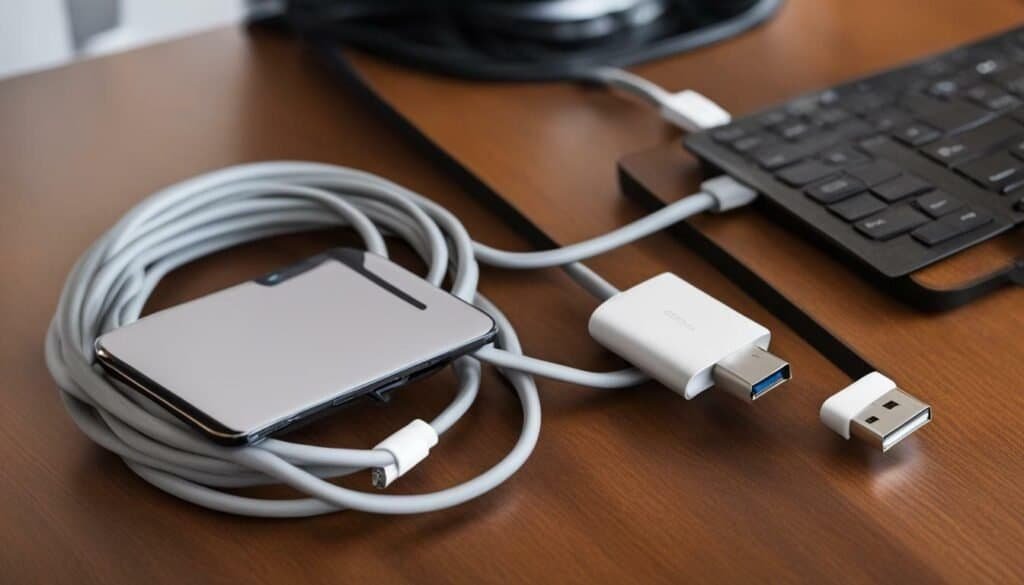
Extending USB Cable Length
Fortunately, there are options available to extend the length of USB Type C cables beyond their maximum limits. USB extenders, active extension cables, and USB hubs can be used to bridge the gap between devices and overcome length limitations. USB extenders are devices that amplify the USB signal, allowing for longer cable runs without signal degradation. Active extension cables incorporate built-in electronics to boost the signal and extend the reach of the cable.
USB hubs can also be used to extend cable length by acting as a bridge between multiple devices. By connecting a USB hub to one end of the cable and then connecting the devices to the hub, the overall cable length can be extended. However, it’s important to note that using USB hubs may introduce additional latency and may not be suitable for all types of USB devices.
When extending USB cable length, it’s crucial to consider the specific device requirements, such as the need for high-speed data transfer or power delivery. Some devices may have stricter requirements, and using extenders or hubs may limit their functionality. It’s always recommended to choose reputable brands and high-quality cables to ensure reliable performance and minimize the impact of extending the cable length.
The Various Uses of USB Type C Cables
USB Type C cables serve multiple purposes beyond just charging, including data transfer, power delivery, and connecting peripheral devices. Their versatility makes them a popular choice for many modern devices, offering faster data transfer speeds and more efficient power delivery compared to previous USB standards.
When it comes to data transfer, USB Type C cables support high-speed connections, allowing you to transfer files quickly and efficiently between devices. Whether you’re transferring large multimedia files or syncing your devices, USB Type C cables provide reliable and fast data transfer capabilities.
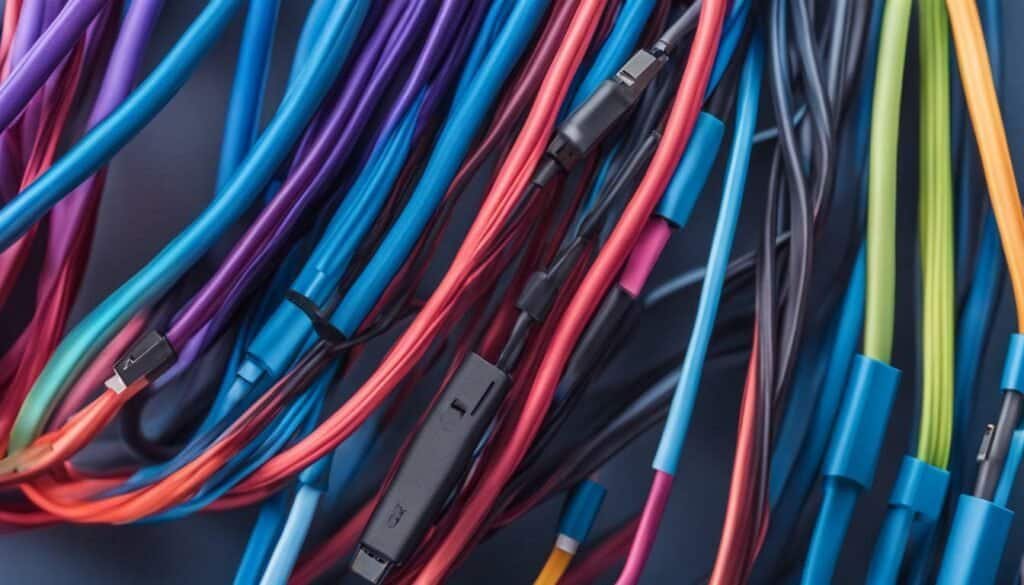
USB Type C cables also support power delivery, making them ideal for charging a wide range of devices. From smartphones and tablets to laptops and even some larger peripherals, USB Type C cables can deliver power efficiently and effectively. This means you can charge your devices faster and more conveniently, reducing the need for multiple chargers or adapters.
In addition to charging and data transfer, USB Type C cables are also capable of connecting peripheral devices. With the appropriate adapters or cables, you can connect your USB Type C cable to HDMI, DisplayPort, Thunderbolt, or other interfaces, allowing you to extend your device’s display to external monitors or connect other compatible devices.
To summarize, USB Type C cables offer a variety of uses beyond charging. They enable fast data transfer, efficient power delivery, and the ability to connect peripheral devices. Their versatility and compatibility with different protocols make them an essential accessory for many modern devices.
Exploring Other Cable Options and Considerations
In addition to USB Type C cables, there are other cable options available such as Thunderbolt 3, Ethernet, HDMI, DisplayPort, and optical cables, which provide different connectivity options.
Thunderbolt 3 cables are known for their high data transfer rates and versatile capabilities. They can support data speeds of up to 40Gbps, making them ideal for connecting high-resolution displays, external storage devices, and even eGPUs for graphics-intensive tasks. With their ability to carry both data and power, Thunderbolt 3 cables offer a convenient solution for users seeking a single cable for multiple purposes.
Ethernet cables are commonly used for wired networking, providing a stable and reliable connection for internet access. They come in various categories such as Cat5e, Cat6, and Cat6a, each with different speeds and bandwidth capabilities. Ethernet cables are often used in offices, homes, and data centers to establish wired connections for devices like computers, routers, and smart TVs.
HDMI and DisplayPort cables are widely used for audio and video connections, allowing users to connect devices like monitors, TVs, projectors, and gaming consoles. HDMI cables are commonly used for consumer electronics, supporting high-definition video and audio signals. DisplayPort cables, on the other hand, are favored by professionals and gamers for their ability to handle higher resolutions, refresh rates, and color depths.
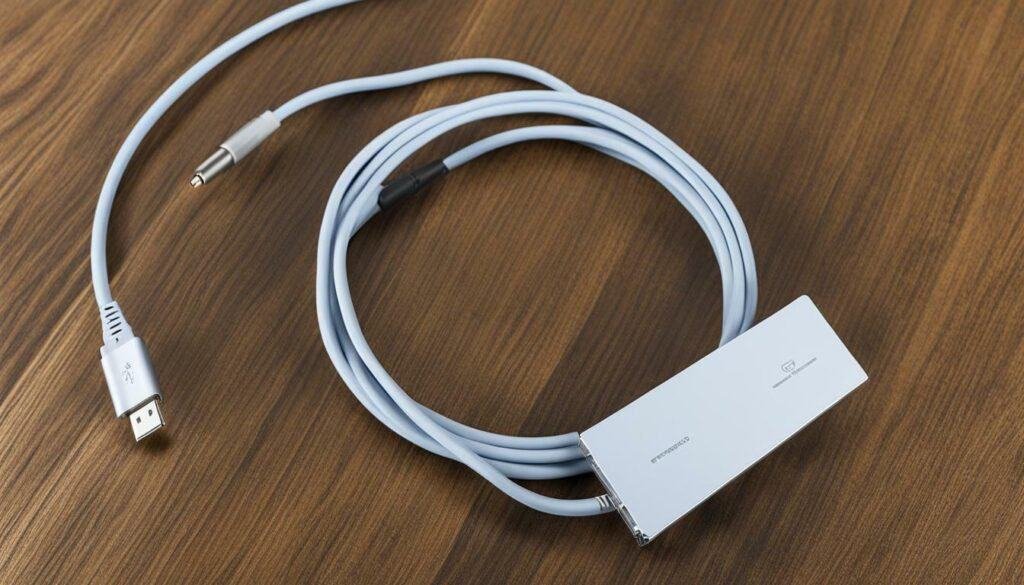
Optical cables, also known as fiber optic cables, are designed for long-distance data transfer with minimal signal loss. They use light signals to transmit data, making them immune to electromagnetic interference. Optical cables are commonly used in networking, telecommunications, and audiovisual applications where high-speed and secure data transmission is crucial.
In conclusion, understanding the various cable options available beyond USB Type C cables is essential for selecting the right connectivity solution for your needs. Whether you require high-speed data transfer, reliable internet connectivity, or audio and video connections, Thunderbolt 3, Ethernet, HDMI, DisplayPort, and optical cables offer versatile options to suit different requirements. Consider the specific capabilities and limitations of each cable type to ensure optimal performance and compatibility with your devices.
Q: What is the longest USB Type C cable available?
A: The longest USB Type C cable available is generally around 6 feet (1.8 meters) in length. However, there are some manufacturers that offer longer cables, usually up to 10 feet (3 meters) or even 15 feet (4.5 meters).
Q: What is USB-C?
A: USB-C, also known as USB Type-C, is a type of USB connector that is reversible and can be inserted into a USB-C port in any orientation. It is becoming increasingly popular as it allows for faster data transfer speeds and provides more power delivery options compared to previous USB versions.
Q: Can USB-C cables transfer data?
A: Yes, USB-C cables can transfer data. They are capable of transferring data at various speeds depending on the USB version and the capabilities of the devices being connected. USB 2.0 and USB 3.1 Gen 1 cables, for example, can transfer data at speeds of up to 480 Mbps, while USB 3.1 Gen 2 cables can transfer data at speeds of up to 10 Gbps.
Q: What is Thunderbolt 3?
A: Thunderbolt 3 is a hardware interface that uses the USB Type-C connector. It provides high-data transfer speeds, supports daisy-chaining multiple devices, and allows for the connection of external monitors. Thunderbolt 3 is backwards compatible with USB-C, which means that USB-C devices can be plugged into a Thunderbolt 3 port.
Q: Can I use a longer USB cable?
A: It is generally recommended to use a USB cable that is no longer than 15 feet (4.5 meters) for reliable data transfer and power delivery. Longer cables may introduce signal loss and power drop, affecting the performance of the connected devices.
Q: Can I charge my devices using a USB-C cable?
A: Yes, you can charge devices using a USB-C cable. USB-C cables are capable of delivering power to compatible devices. However, it is important to ensure that the cable can handle the power requirements of the device you are trying to charge.
Q: What is the maximum length of a USB cable?
A: The maximum length of a passive USB cable, such as a USB 2.0 cable, is generally 15 feet (4.5 meters). However, active USB cables, which have built-in signal boosters, can extend the maximum length to around 32 feet (10 meters) or even longer.
Q: Can a cable be too long?
A: Yes, a cable can be too long. As mentioned earlier, longer cables may introduce signal loss and power drop, which can result in decreased performance and unreliable connections. It is important to use the appropriate length of cable for your specific needs.
Q: Are all USB cables the same length?
A: No, USB cables come in various lengths. The length of a USB cable can vary depending on the manufacturer and the intended use. It is essential to choose the right length of cable based on your specific requirements.
Q: Are all USB cables capable of fast charging?
A: Not all USB cables are capable of fast charging. USB cables that are specifically designed and certified for fast charging, such as USB-IF certified cables, are recommended for charging devices at their maximum supported speeds. Regular USB cables may not provide the same charging efficiency.
Conclusion
Understanding the maximum length of USB Type C cables and the options available for extending their reach is essential when choosing the right cable for your needs.
The longest USB Type C cable currently available on the market can reach up to 3 meters in length. USB Type C is a versatile connector that supports various protocols and connections such as HDMI, DisplayPort, Thunderbolt, and USB 3.1.
USB cables come in different lengths, depending on the USB generation they support. For USB 3.2 Gen 1 cables, the maximum practical length is around 2-3 meters, while USB 3.2 Gen 2 and USB 3.2 Gen 2×2 cables have a maximum length of one meter. USB 4 cables are limited to a maximum length of 0.8 meters.
To extend the length of USB cables beyond their maximum limits, several options are available. USB extenders, active extension cables, and USB hubs can be used to achieve longer cable lengths, depending on the specific device and requirements.
When choosing a USB Type C cable, it is important to consider the maximum length required for your specific setup, as well as the need for any extension options. Additionally, it is crucial to understand the limitations of USB 4 cables and consider charging speeds to ensure optimal performance.
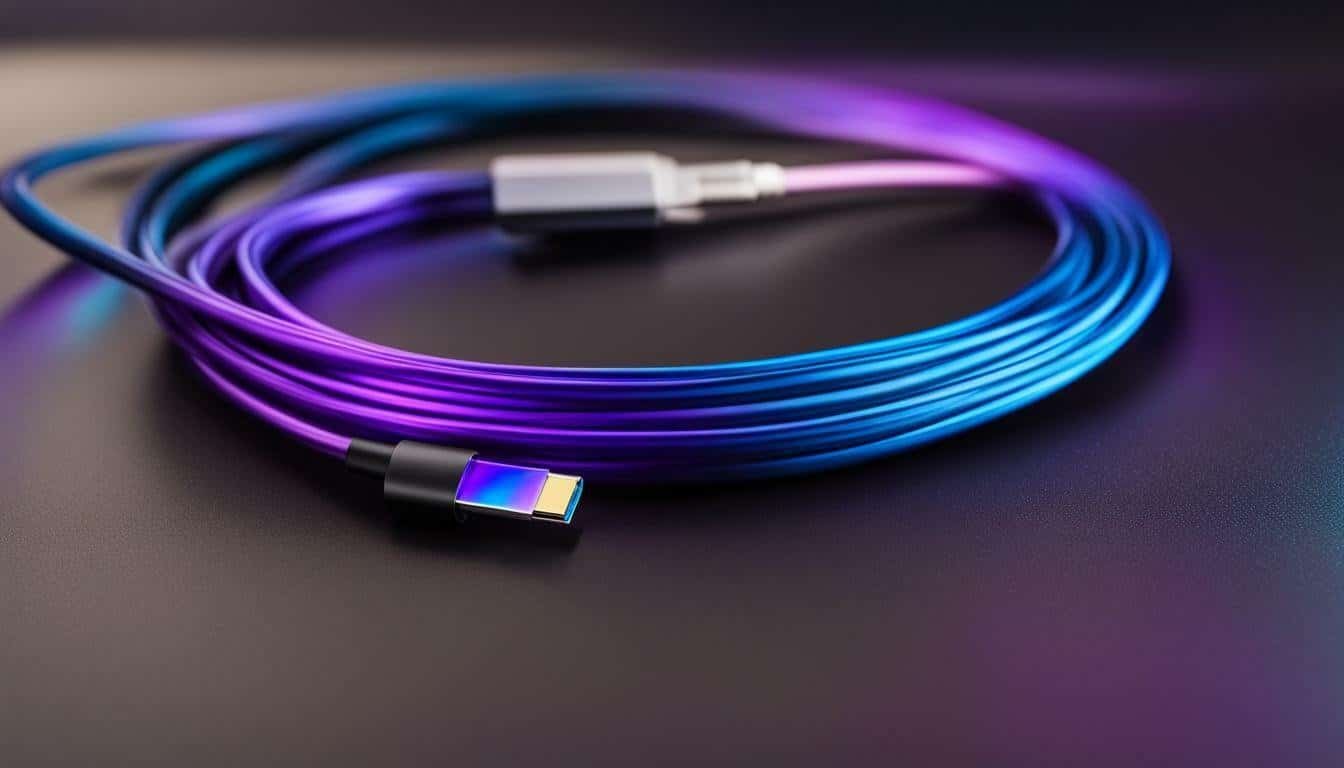
![Top & Best Processors For Hacking: [High-Performance CPUs]](https://nondevelopers.com/wp-content/uploads/2023/06/Best-Processors-for-hacking.jpg)


0 Comments